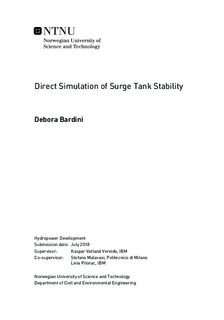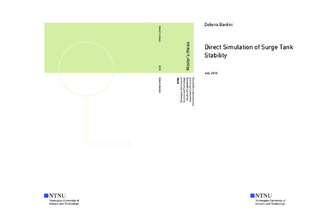| dc.description.abstract | This thesis deals with the issue of surge tank stability in hydropower plants, investigating methods used to design the surge tank area required to guarantee stability.
Currently, Thoma equation (1910) is widely accepted as the standard approach for surge tank dimensioning. However, this approach has proven excessively conservative, often leading to over-dimensioned surge tanks. Recent developments in computational power enable us to consider alternative methods, with the direct simulation, consisting in the numerical simulation of the entire hydropower plant, as one of the most promising.
This study draws a comparison between Thoma equation approach and the direct simulation. A 1D numerical model of Roskrepp power plant (Vest-Agder County, Norway) is developed and calibrated in the LVtrans freeware. Transients originating from different scenarios are analysed.
Simulation results show that the direct simulation method proves superior, with a more accurate dimensioning of the surge tank. However, Thoma equation, albeit less accurate, still proves relevant for the early stages of design, when limited design data are available.
Keywords Hydropower, Stability, Transients, Surge tanks, Direct simulation, 1D numerical model, LVtrans, Thoma method | |

